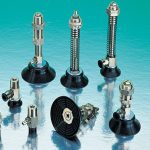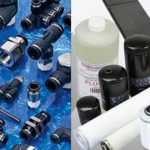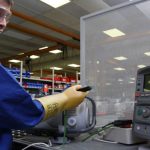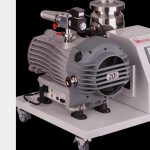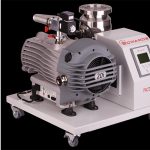Gas springs are pneumatic cylinders of heavy-gauge steel that hold pressurized nitrogen gas. A nitrite- or chrome-coated steel shaft with a seal on one end extends out from the cylinder. If you push on the shaft, it will collapse in on itself, and then the strength of the pressurized air on the inside will push back. If you pull on the shaft, it will extend outward, then pull back in as the vacuum created by your pull fights against the force of your hands. Depending on the cylinder and shaft diameters, the sealed kind of gas springs generally come with initial internal pressures between 5 lbs and 450 lbs.
Some variations (which use natural atmosphere rather than nitrogen) have a small hole on the far end of the cylinder that allows air to flow slowly into or out of the cylinder — thus creating a mechanism by which pressure on the gas spring is first fought by the pressure created inside the cylinder, then slowly released as the pressure inside equalizes with the pressure outside through the small hole.
If you want your gas springs to keep functioning for as long as possible, you want to minimize stroke (the distance the shaft has to travel) and maximize gas volume (the pressure inside the cylinder). You also want the end connectors — generally ball-and-socket joints to protect the gas springs from experiencing torque-induced load — to be strong enough to withstand both tensile and compressive loading. (The cheaper flat connector with a hole that creates a hinge joint is awful for your gas springs’ life as it has no ability to relieve stress from out-of-plane movements.)
The best placement for the gas spring has the shaft pointing down (and correspondingly the cylinder pointed up.) This is because the spring passes through a thin layer of oil at the end of it’s complete stroke to keep it lubricated, and the shaft-down orientation ensures the oil is gathered in one place to present maximum effectiveness at lubricating the spring.
Finally, keep the gas springs within the temperature limits recommended by the manufacturer. Over-hot springs allow gas to escape by increasing the pressure of the gas inside the spring (and remember that we’ve already chosen to maximize the internal pressure in order to improve spring life, so increasing it even more will cause problems), and over-cold springs allow gas to escape by causing shrinkage of the seal that holds the gas in.
Stick with these guidelines, and your gas springs will last for decades.











